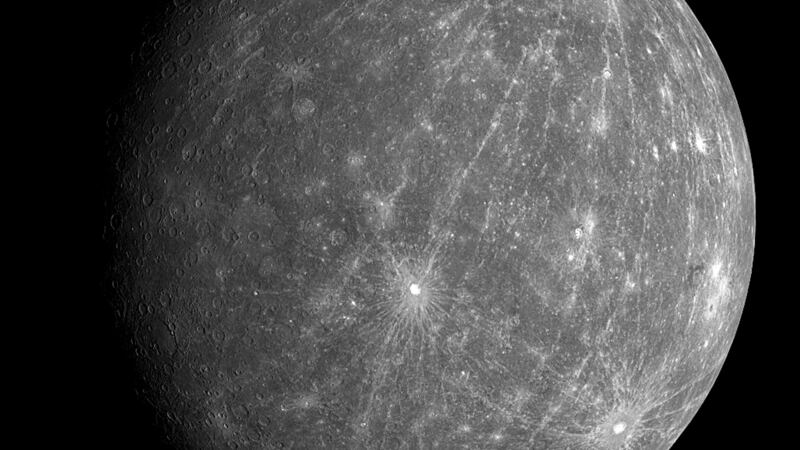A major astronomical event is underway but you would hardly notice it unless someone told you.
The planet Mercury is making a transit right now across the sun, appearing like a small black ball slowly coasting across the sun’s face.
This will NOT be an event you can watch with the naked eye. Looking at the sun, even for a few seconds can damage sensitive cells in the eye.

And even if you were looking through a special solar filter, Mercury would still be difficult to see because it is so small.
A transit of Mercury occurs on rare occasions when the sun, Mercury and earth line up with Mercury, the pig in the middle.
The timing has to be just right for us to watch a transit. Many of them occur when we are facing away from the sun so we do not get to see them.
For this transit we are in the perfect viewing position, getting to see the whole thing from start to finish.
The transit goes on all day. From our vantage point in Ireland, it started at about noon and continues all day until it drops out of the picture by about 7pm.
The simplest and safest way to watch the transit live is to visit internet sites set up by the European Space Agency (ESA) or by the US National Aeronautics and Space Administration (Nasa).
You can see the transit in progress and read explanations about what is going on.
There are other opportunities to watch safely without taking chances by looking at the sun. Trinity College Dublin has telescopes and a big screen that can either show the real thing or what Esa or Nasa are relaying.
There is a similar setup put together by Astronomy Ireland at its base at the Centrepoint on the Rosemount Business Park, Blanchardstown.
Cork Institute of Technology’s Blackrock Castle Observatory has also got the transit on its website and has telescopes set up to capture the transit as it occurs.
There is plenty of time to find safe places to watch through telescopes that have special solar filters.
DO NOT under any circumstances attempt a DIY approach to watching through sunglasses or smoked glass as your sight could be damaged permanently.
Mercury transits are not infrequent, but this is a particularly good one as Mercury is closer to earth than usual and so the black ball crossing the sun looks bigger, Astronomy Ireland says.
There will not be another this good until 2049 but there will be another visible to us before then in 2019.









